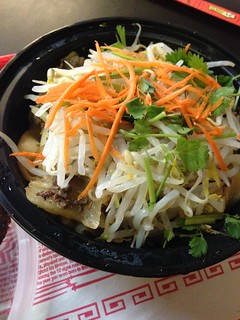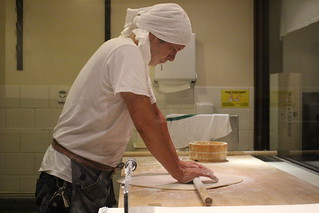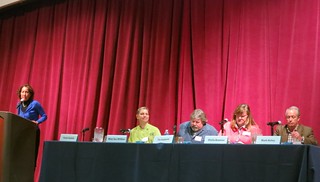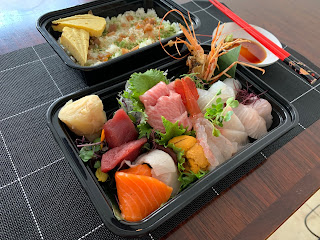Xi'An Hand Pulled Noodles at Gene's Chinese Flatbread Cafe (Boston, MA)
I've tried a few Chinese restaurants in the Boston area, and I wasn't really wowed by any of them. They're fine and would satisfy cravings, but there wasn't really many shops that specialize in any particular thing. But I kept reading about Gene's Chinese Flatbread Cafe, and I thought, this would be it. Gene's Chinese Flatbread Cafe, despite the name, really specializes in Xi'An style hand pulled noodles, also known as biang biang noodles.

The owner, Gene Wu, hand pulls the noodles every morning. There are a variety of noodle dishes you can try with the hand pulled noodles, but the crowd favorite seems to be the #9, served with cumin lamb. You'd also want to get a side of the cumin lamb skewer for $1.50 each.
The #9 dish consists of a base of chili oil, then hand pulled noodles, thin slices of cumin-seasoned lamb and topped with fresh bean sprouts, carrots, and cilantro.







